We gardeners are a diverse crowd. Many of us are introverts, finding joy and solace in communing with nature. The private spaces of introverts tend to reflect their solitary nature, whether they are artists, philosophers or travelers. They invite only a carefully chosen few into their personal enclaves.
Some of us, however, are true extroverts, creating vibrant, usable spaces where “the more, the merrier” is the working theme. Here hardscape rules, with plants used as supporting actors instead of stars. Every aspect of these gardens has a function and purpose.
Let’s look at how to design a user-friendly garden that satisfies the personality of the extrovert.
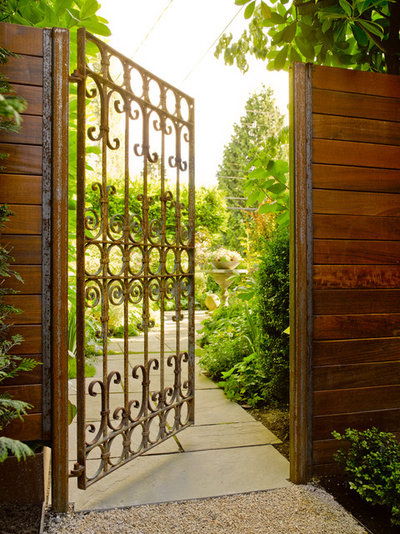
Scot Eckley, Inc.
Create an inviting entrance. Every good novel has a chapter one, in which the scene is set. Similarly, every good garden has an entrance, a point of departure for the story it has to tell. Whereas the entrance to the artist’s or philosopher’s garden may be a solid locked gate, the entrance to the extrovert’s garden may well be transparent and inviting. If it is possible to leave the gate ajar, all the better. This creates a welcoming invitation with no RSVP required.
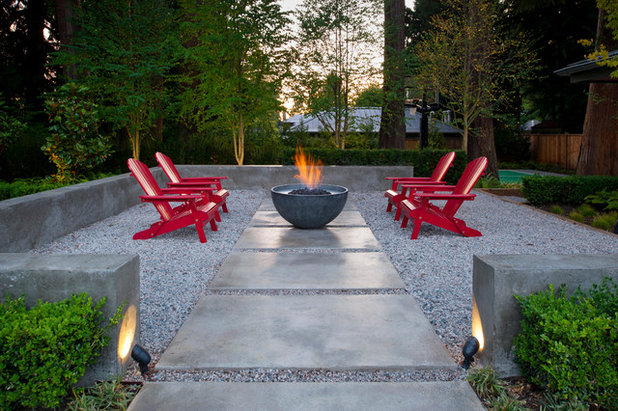
Revival Arts | Architectural Photography
Pathways: Wider is better. Good garden design dictates that once a visitor is inside the garden, he or she can easily navigate the space. The width, shape and substrate of the pathway continue to tell the story. A narrower, winding pathway invites exploration, evokes mystery and slows the pace of the visitor so that attention is paid to details. A straighter, wider pathway is more utilitarian with regard to moving visitors from one point to another.
An acceptable width for a typical garden pathway is generally 3½ to 4 feet, although pathways designed for solitary exploration may be as narrow as 2 feet. The garden of the extrovert, however, may sport pathways of 5 or even 6 feet in width. The extra width encourages more than two people to walk side by side and can make for a gregarious space.
Keep in mind that pathways constructed of stone, brick or concrete may be more friendly to heeled shoes than those made of gravel or mulch.
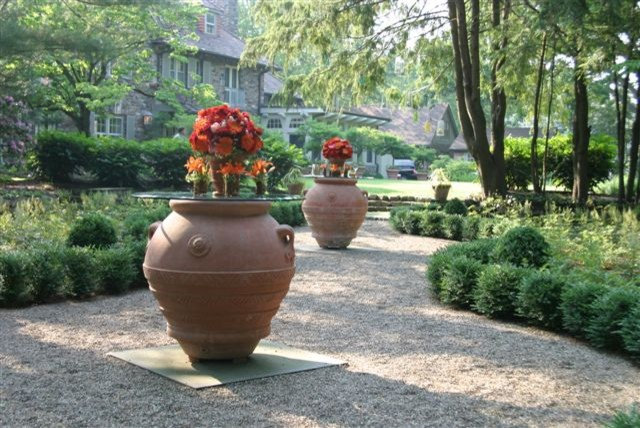
AHBL
Extra-wide pathways can perform double duty as entertaining spaces. This garden designer added oversize Italian pottery. The pots create an instant focal point and establish a rhythm throughout the space. Round glass atop the pots creates additional serving stations for party guests.
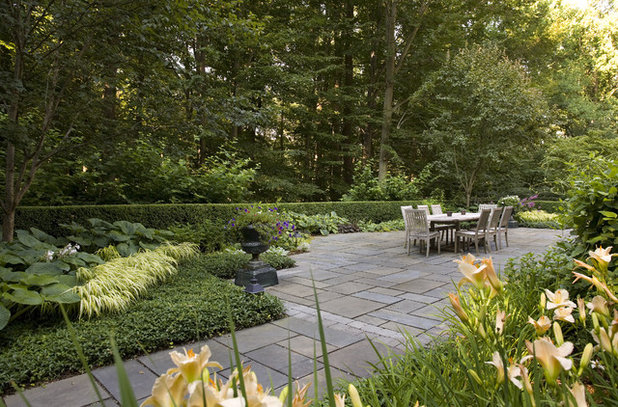
Liquidscapes
Encourage animated conversation and laughter with wide-open spaces. Larger, more open spaces tend to fuel boisterous expression, while smaller spaces, as a rule, tend to feel quieter and more intimate.
What if you don’t have the luxury of a large, open space? Let’s look at some design techniques to compensate for that.

Rocco Fiore & Sons, Inc
Choose an appropriate plant palette. Most of the gardens featured in this ideabook incorporate subdued plant palettes, mostly in shades of green. This is because in the extrovert’s garden, plants frequently take a backseat to social activities. You will notice, however, that a rich array of textures more than compensates for the lack of bright color. This creates an additional layer of interest and support without detracting from the main event.
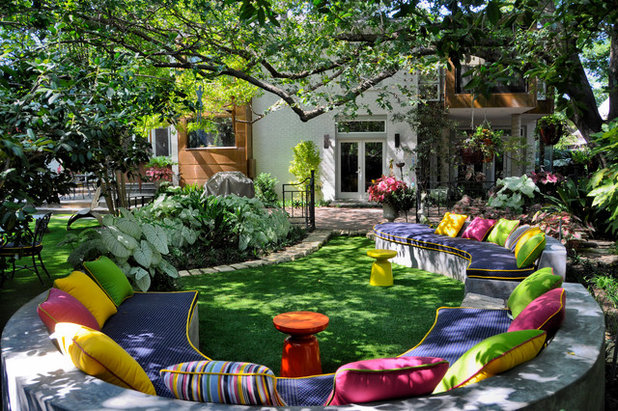 Use color to bring out your inner party animal.
Use color to bring out your inner party animal. Just as many nocturnal insects are attracted to bright light, many extroverts are drawn to bright colors. Saturated colors create a festive atmosphere just right for informal gatherings. In contrast, white furniture and fabrics create a more elegant, formal environment. Neutrals can create a rustic vibe.
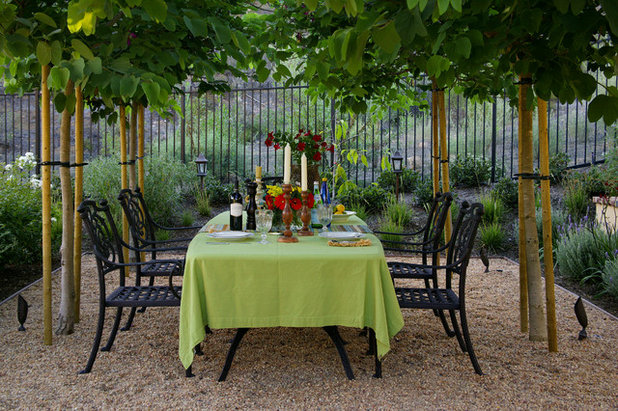
Site Design Studio
Create a garden theme that complements your style of entertaining. Perhaps you are known in your social circles as a great Italian cook. Why not design the entertaining space of your garden around this theme? Appropriate plants, candleholders, table linens and tableware can add your personality to your space. Don’t forget the wine.
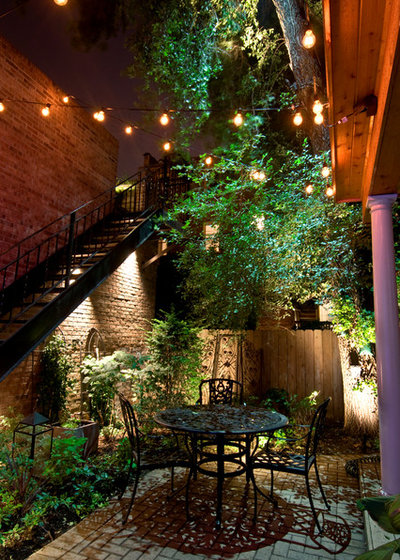
Accents Lighting
Employ lighting to create festive drama. The appropriate use of outdoor lighting can influence moods and create the vibe you are seeking for your space. Small spaces feel larger and spring to life with well-designed lighting.
Spotlights can create interest and seductive drama. Lighting can wash across surfaces to highlight textures and shapes. And finally, lights strung overhead create a festive mood for evening cocktails and themed parties.
If you are not confident in your technical and aesthetic abilities with regard to designing and installing lighting, an outdoor lighting professional could save you time and money.
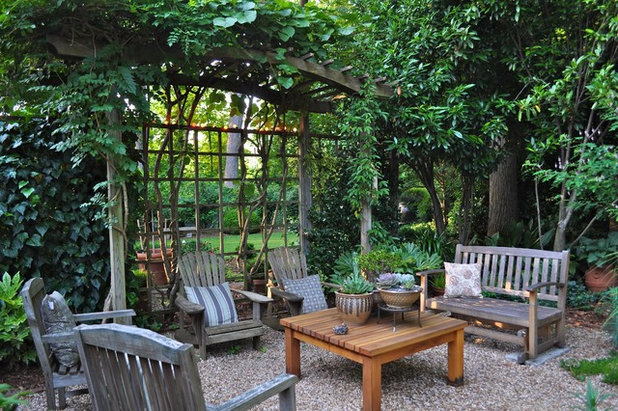
Bruce Clodfelter and Associates
Create inviting smaller spaces for intimate conversation. The extrovert’s well-designed garden should incorporate smaller vignettes so partygoers can break off from the crowd for more intimate conversations. Narrower paths leading to small seating areas with cozy furniture provide a respite during larger gatherings. A surrounding hedge or wall will create a psychological sense of freedom and security for those who venture there and can optimize usable space in a smaller garden.
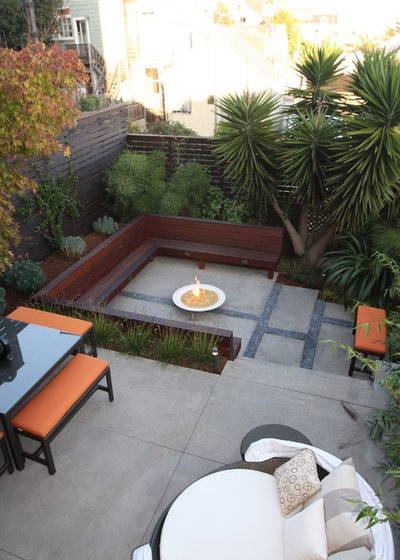
Outer space Landscape Architecture
Consider different levels for a smaller space. Perhaps your garden consists of an urban courtyard. How do you maximize your available space and create different entertainment areas? Consider adding a third dimension to your space by changing elevation. You’ll be surprised at how many areas you can carve out of your small space by going up or going down.
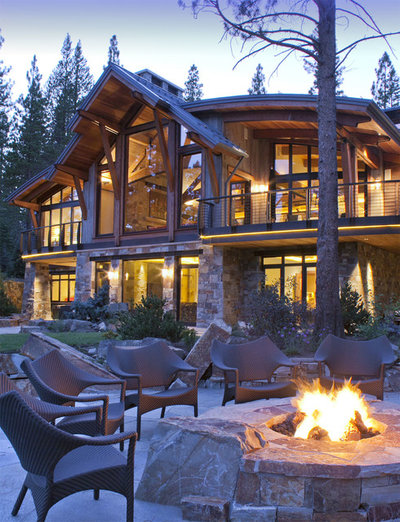
Kelly & Stone Architects
Include your entertaining necessities. The extrovert’s garden may not be complete without a fireplace, fire pit, grill or kitchen. Prioritize your needs based on your own style, not what your neighbor or favorite home improvement show says you must have. After all, this is your garden. You should wear it well.





